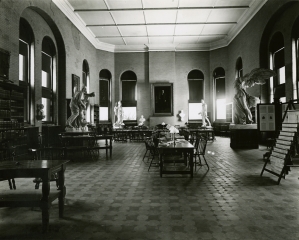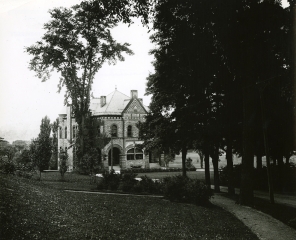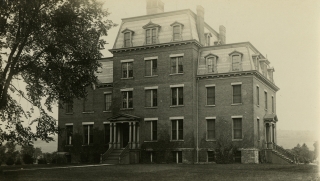Colgate Years: “It might almost be said we were being swept along by a restless current and that we dragged our oars once in a while to keep from being carried too fast or too far.”
Madison University experienced no serious conflicts between science and religion. ;President Dodge, though primarily a theologian, kept up with the broad outlines of current scientific trends. His attitude profoundly affected the intellectual climate of the campus making it hospitable to :new data and theories.
The senior science professor, Lucien M. Osborn, who at various times taught; physics, astronomy, and chemistry, was a profoundly religious man. He saw science as revealing the Creator’s hand and inspired his students with his own reverential but undogmatic approach. His course in astronomy, taught with a rather simple telescope, met with their enthusiastic approbation.
The appointment of Professor McGregory to the new chemistry chair in 1883 and the construction of a building for his department mark a major; advance in science teaching. An Amherst graduate in the Class of 1880, he proved to be an ideal man for the position which he was to hold for 46 years. His qualifications included, in addition to membership in the Baptist church, a thorough grounding in science at Amherst, two years experience as a chemistry instructor at his Alma Mater, and study at Gottingen and Heidelberg where his professors included H. Huebner and Victor Meyer. He had an aptness for teaching, and an understanding and affection for students. When he met his classes in the fall of 1884, after an additional year of graduate work in Germany, he at once won their admiration. Though the laboratory facilities of the new building were not to be available for nearly six months, the students found that their new professor enlivened a subject they had expected would be dull and soon it became one of the most highly regarded in the curriculum. In discussing the role of his department in 1893, Professor McGregory stated that all branches of science should be viewed as parts of a liberal education. He had no desire, he said, to make the college in any way a scientific school but stressed thorough instruction and a broad foundation as preparation for graduate study elsewhere. Many of his students were to prove the soundness of this approach as they moved on into eminence in chemistry and related fields.
For Dr. Walter R. Brooks, former pastor of the First Baptist Church













